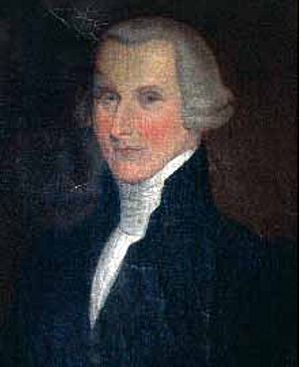Maurice O'Connell (Hunting Cap) facts for kids
Maurice "Hunting Cap" O'Connell (who was called Murrish-a-Caupeen in Irish) was born in 1728 and passed away on February 10, 1825. He was a wealthy man who owned a lot of land in County Kerry, Ireland. He was also famous for being the uncle of a very important Irish leader, Daniel O'Connell. Maurice got his special nickname, "Hunting Cap," because he chose to wear a velvet cap instead of the fancy beaver hats that rich people usually wore back then.
Contents
Maurice's Early Life and Family
Maurice O'Connell was born in 1728 at Derrynane House, which is located on the beautiful Iveragh peninsula in County Kerry. He was one of many children born to Daniel O'Connell (who was also called Donal Mór) and Máire Ní Dhonnchadha Dhuibh. Maurice had a very large family, with 22 brothers and sisters in total! Five of his brothers and eight of his sisters grew up to be adults.
His grandfather, John O'Connell, was a brave captain in King James II's army. Maurice went to school in Cork. When his older brother, John, passed away in 1751, Maurice inherited Derrynane House and the family's lands. In 1758, he married Mary Cantillon, who came from County Limerick. She brought a dowry of £1,000, which was a lot of money at the time.
Maurice's Interesting Career
Maurice O'Connell enjoyed a quiet life in the beautiful glens of County Kerry. He once said that people in these hidden valleys could "profess the beloved faith of our fathers," meaning they could practice their Catholic religion freely. He often wrote letters to his youngest brother, Daniel Charles O'Connell, who was an officer in the French army. In 1793, when France was going through a big revolution, Daniel Charles had to escape. Maurice welcomed him and even gave him 300 guineas (a type of money), which helped Daniel Charles move to London and work on forming the Catholic Irish Brigade.
Maurice was not very interested in fancy parties or politics. He preferred to live simply in the countryside. Even though he was very generous and welcoming to others, he managed to become quite wealthy. He made his money from various small businesses and also from importing goods in a way that avoided taxes. This was a common practice at the time, and it helped him build his fortune.
In 1793, Maurice O'Connell was given important roles in County Kerry. He became a deputy governor and later a Justice of the peace. This meant he helped keep order and fairness in the area. He attended important meetings until 1815, even when he was almost blind. In 1796, when a French fleet of ships entered Bantry Bay, he quickly told the authorities. Maurice later supported the Act of Union 1801, which joined Ireland and Great Britain.
Supporting His Nephew, Daniel
Maurice O'Connell never had children of his own, so he helped many of his relatives. The most famous person he supported was his nephew, Daniel O'Connell. From around 1780, Maurice raised Daniel at Derrynane House and planned for Daniel to inherit his wealth. He also paid for Daniel's education to become a lawyer.
Maurice really wanted Daniel to marry someone wealthy. However, Daniel secretly married his cousin, Mary O'Connell, who did not have a dowry. When Maurice found out about the secret marriage, he was very upset and stopped supporting Daniel for a while.
Maurice's Later Years and Legacy
Maurice O'Connell lived a very long life, passing away on February 10, 1825, at the age of 97. He even wrote his own epitaph (a message for his tombstone). It said that his main goal in life was "to elevate an ancient family from unmerited and unjust oppression." This meant he wanted to help his family regain their important place after facing unfair treatment.
He was buried on Abbey Island, near Derrynane, alongside his parents. Maurice left behind a large fortune of £54,000. Before he died, he and his nephew Daniel made up. Because of this, Daniel inherited Derrynane House and an income of about £4,000 each year.


